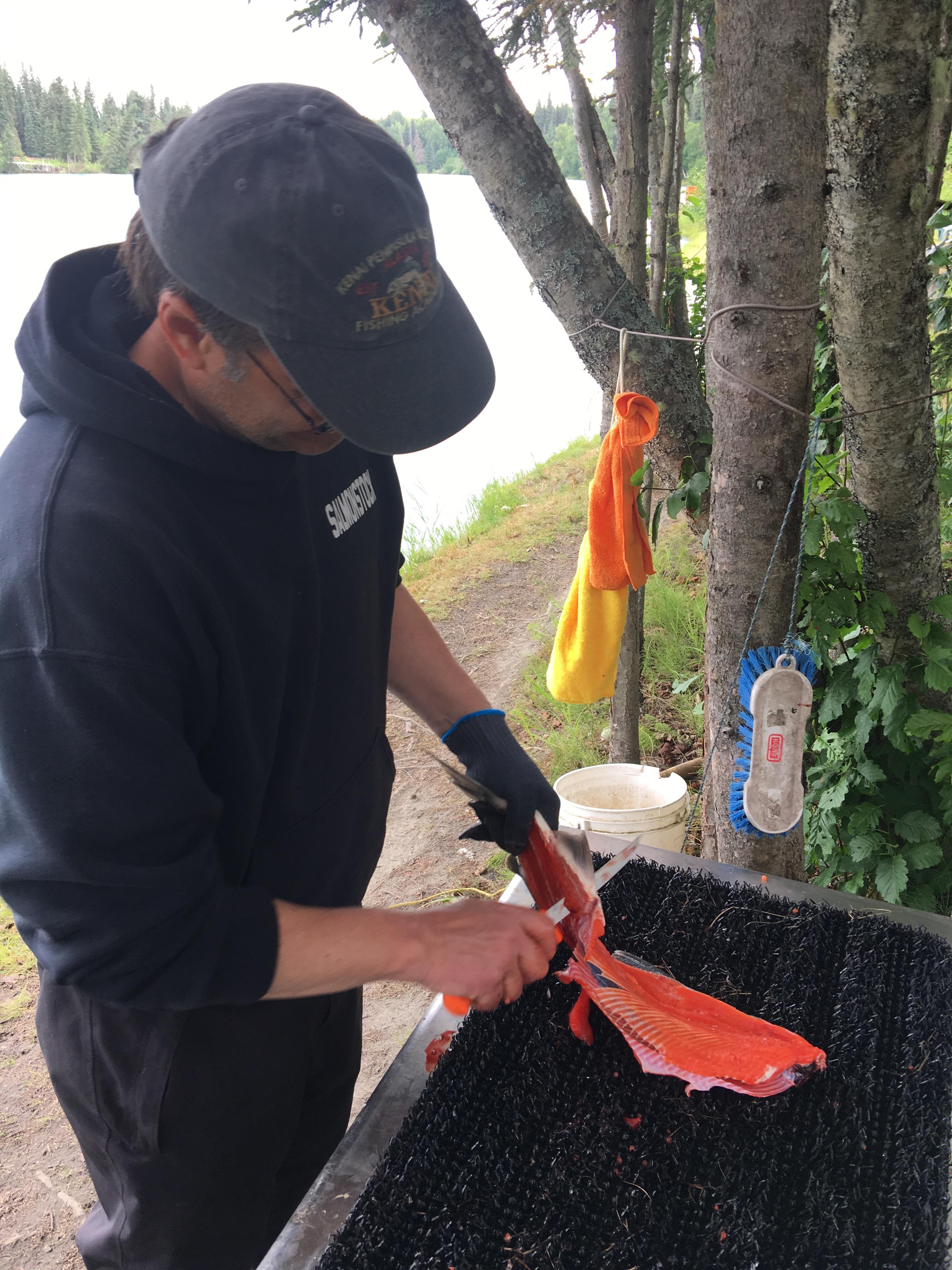The author preparing to use the whole salmon, rather than just the filets.
By Dave Atcheson
While I’m a “catch and release” fisherman when it comes to rainbow trout, like most Alaskans I look forward to filling my freezer with salmon every summer.
Over the years I’ve become pretty adept at filleting. I’m not necessarily fast with a fillet knife, yet I pride myself on not leaving much meat behind. Nevertheless, that didn’t stop a friend of mine, a native woman from interior Alaska, from commenting on how much meat was being wasted when I, along with other fishers along the shores of the Kenai, simply tossed our leftover carcasses back to the river. That was several years ago, and since that time I have given a lot of thought to her concern. Sure, those carcasses nourish the stream, feed the trout and the birds, but there still must certainly be another way, a delicious way, to put them to use.
I started by hanging on to king salmon carcasses, finding that, as proficient at filleting as I am, there was a meal, a delectable meal, to be had even after the fillets were removed. Even a modest king, of 25-pounds or so, yields an amazing treat when seasoned and placed on the grill. I remove the head, the guts, and the bloodline, sprinkle it with season salt, and drizzle on a little melted butter and soy sauce. When grilled, it will provide an ample meal for 2- 4 people. Also, some of the most delectable eating, just like beef, is the meat near and around the bones.
After that I began keeping my much smaller sockeye and silver salmon carcasses as well. Since they did not yield enough meat for a meal, I figured they could be used for fish stock. Always trying to think of a better way to do things, that’s when it dawned on me, that if I smoked the carcasses they might provide an even more flavorful broth. And boy, was I right. Once again, I remove the viscera and if keeping the heads, remove the gills. What’s left can then be frozen until I’m ready to get cooking. I usually start with anywhere from 6 to 10 carcasses, thawing them and then placing them in a brine overnight. After smoking for 6 hours or so, they go into a large stock pot with celery, onions, and garlic, and simmer for several hours, until all the meat has fallen off the bones. I strain the broth and place it in three-cup, plastic containers, which can then be re-frozen and used when needed.
Why three-cup containers? I’ve found that is the perfect amount to use in chowders or to use to cook one cup of rice, to which it imparts exceptional flavor. In fact, one time I had guests over and made burritos with that rice, and while no one could quite put their finger on what gave it such a unique smoky flavor, it was the salmon stock that made it so memorable.
So, don’t just throw that carcass back to the river or sea; save it and reward yourself with the added bonus of several additional and delicious meals.
Dave Atcheson is a member of the Kenai Peninsula Chapter of TU. He is also an author, who’s latest book is Dead Reckoning, Navigating a Life on the Last Frontier, Courting Tragedy on its High Seas. He is also the author of the guidebook Fishing Alaska’s Kenai Peninsula, and National Geographic’s Hidden Alaska, Bristol Bay and Beyond. For more info:www.daveatcheson.com.



